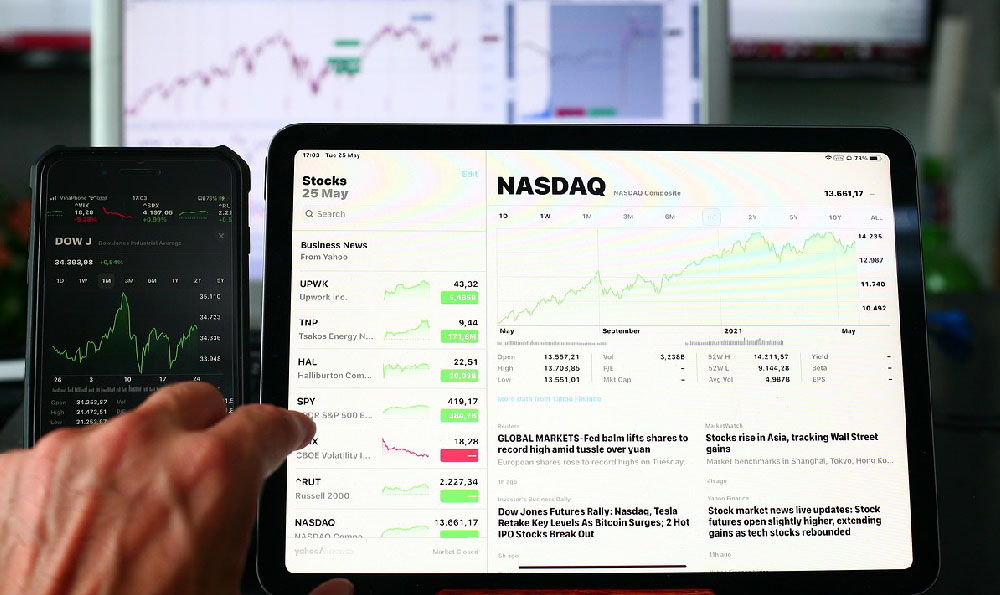Investing in Apple (AAPL) has been a rewarding venture for many over the years. The company's innovative products, strong brand loyalty, and consistent financial performance have made it a favorite among investors. However, like any investment, it’s crucial to approach Apple shares with a well-thought-out strategy. This guide aims to provide beginners with a comprehensive understanding of how to invest in Apple and whether it aligns with their individual financial goals and risk tolerance.
Before diving into the mechanics of buying shares, it's essential to consider whether Apple is a suitable investment for you. This decision hinges on several factors, including your investment timeline, risk appetite, and overall portfolio diversification strategy. If you're a young investor with a long-term horizon and a higher risk tolerance, Apple could be a valuable addition to your portfolio, potentially offering substantial growth over time. Conversely, if you're closer to retirement or prioritize capital preservation, a more conservative approach with a diversified portfolio of lower-risk assets might be more appropriate.
Apple's financial health and future prospects are also vital considerations. The company's revenue streams are primarily driven by iPhone sales, but its diversification efforts into services (Apple Music, iCloud, Apple TV+) and wearables (Apple Watch, AirPods) are gaining significant traction. Evaluate Apple's quarterly earnings reports, paying close attention to revenue growth, profit margins, and management's outlook for the future. Additionally, assess the competitive landscape. How does Apple stack up against its rivals in the smartphone market, and are its innovation pipelines robust enough to maintain its competitive edge? The company's ability to adapt to changing consumer preferences and technological advancements is crucial for long-term success.

Once you've determined that investing in Apple aligns with your investment profile, you can proceed with the actual process of buying shares. The easiest and most accessible method for most individuals is through a brokerage account. Brokerage accounts allow you to buy and sell stocks, bonds, mutual funds, and other securities. Research and compare different brokerage firms, considering factors such as commission fees, account minimums, trading platforms, and research resources. Many brokers now offer commission-free trading, which can significantly reduce your investment costs, especially for smaller trades.
After opening and funding your brokerage account, you can search for Apple's stock ticker symbol, AAPL, on the broker's trading platform. You'll then need to decide on the number of shares you want to purchase and the type of order you want to place. A market order executes the trade immediately at the current market price, ensuring that your order is filled quickly but potentially at a price slightly higher or lower than you anticipated. A limit order allows you to specify the maximum price you're willing to pay for the shares, giving you more control over the purchase price but potentially delaying or preventing the execution of the trade if the market price doesn't reach your limit.
Another approach to investing in Apple is through Exchange-Traded Funds (ETFs). ETFs are baskets of stocks that track a specific index, sector, or investment strategy. Many ETFs hold Apple as a significant component of their portfolio, allowing you to gain exposure to Apple alongside other companies. Investing in an ETF can offer greater diversification than buying individual Apple shares, reducing your overall risk. Research ETFs that focus on technology or the S&P 500, as these often have significant holdings in Apple.
Dollar-Cost Averaging (DCA) is a strategy that involves investing a fixed amount of money in Apple shares at regular intervals, regardless of the stock price. This approach helps to mitigate the risk of buying at the peak of the market and can smooth out your average purchase price over time. Instead of trying to time the market, which is notoriously difficult, DCA allows you to consistently invest in Apple and potentially benefit from long-term growth.
Protecting your investment and avoiding common pitfalls is paramount. Be wary of get-rich-quick schemes or unsolicited investment advice. Thoroughly research any investment opportunity before committing your money, and don't be afraid to seek advice from a qualified financial advisor. Never invest more than you can afford to lose, and maintain a diversified portfolio to reduce your overall risk.
Furthermore, be prepared for market volatility. The stock market is inherently unpredictable, and Apple shares can fluctuate in value based on various factors, including company news, economic conditions, and investor sentiment. Don't panic sell during market downturns, as this can lock in your losses. Instead, maintain a long-term perspective and focus on the underlying fundamentals of the company.
Finally, remember that investing in Apple is a continuous process that requires ongoing monitoring and evaluation. Regularly review Apple's financial performance, industry trends, and competitive landscape to ensure that your investment thesis remains valid. Be prepared to adjust your investment strategy as needed based on changing circumstances. Investing in Apple can be a rewarding experience, but it requires discipline, patience, and a thorough understanding of the company and the market. With careful planning and a long-term perspective, you can potentially benefit from Apple's continued success and achieve your financial goals.












